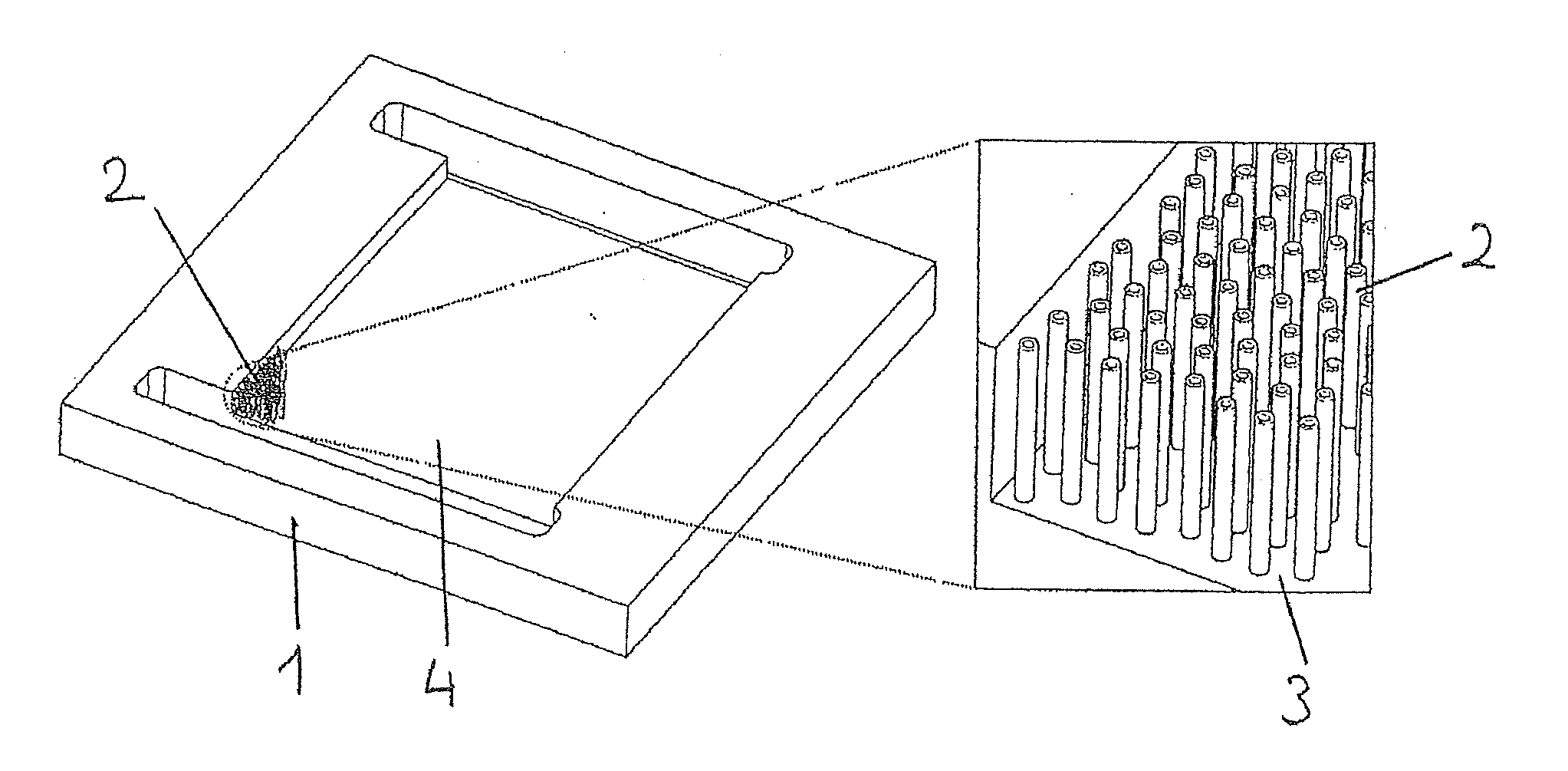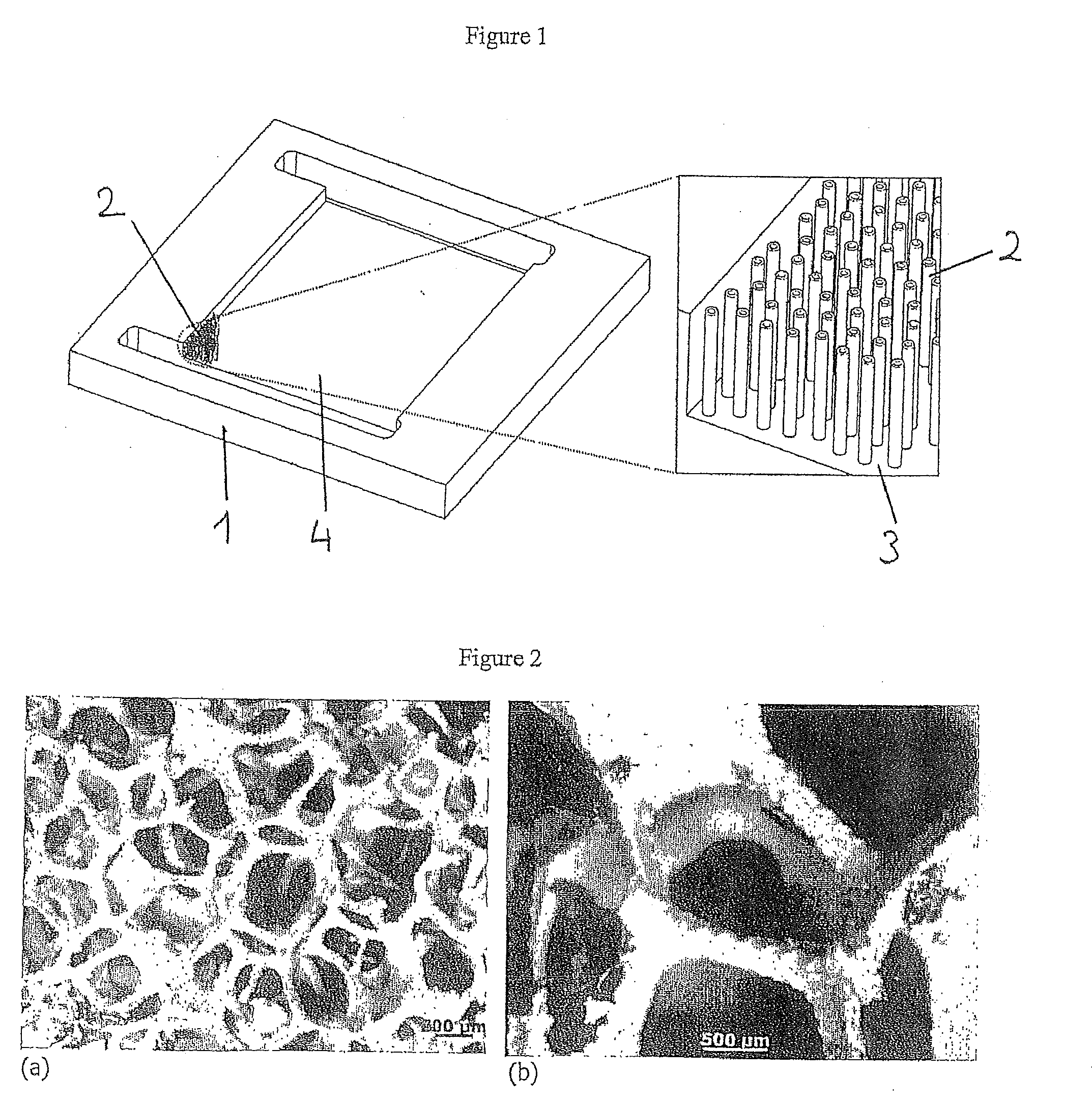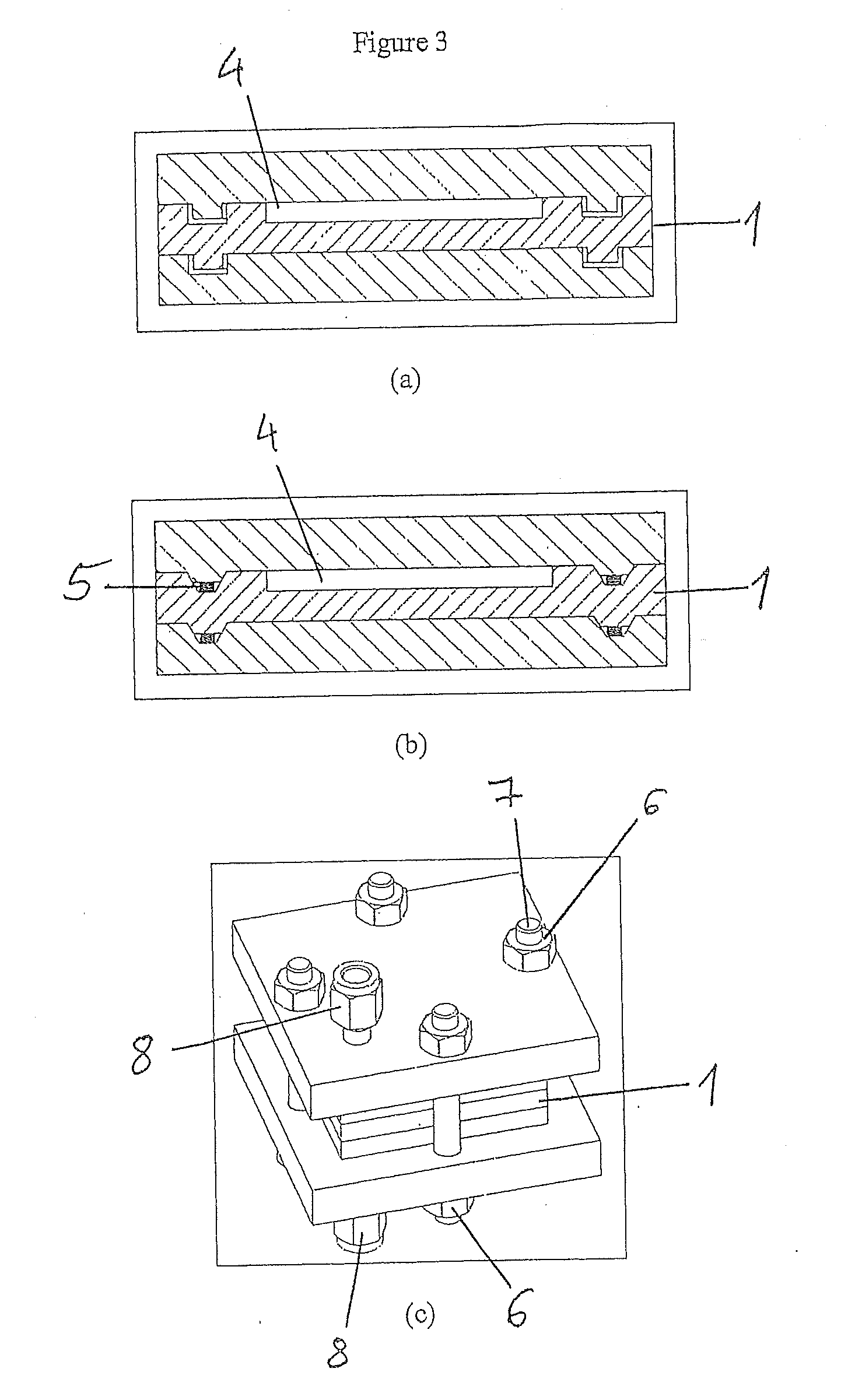Chemical reactor with nanometric superstructure
a nano-structure, chemical reactor technology, applied in nuclear engineering, metal/metal-oxide/metal-hydroxide catalysts, water/sewage treatment by ion exchange, etc., can solve the problems of inability to meet the requirements of all substrates, system requires additional steps, and the intermediate validation steps of the method are generally costly and difficult to predict, etc., to achieve excellent heat conductivity of the nano-structure, superior selectivity, and the effect of selective chemical reactions
- Summary
- Abstract
- Description
- Claims
- Application Information
AI Technical Summary
Benefits of technology
Problems solved by technology
Method used
Image
Examples
example 1
Production of Hierarchised Structure Reactors
Method A
[0143]To prepare the main panel of the microreactor, a part made of heat-resistant steel is cut to the dimensions 50×40×5 mm whereon a 34×28×2 mm channel is machined. At both ends of the channel, two rectangular openings are produced and used as the gas mixing space and for a gas inlet and outlet. The channels are connected to reagent admission systems on either side of the panel.
[0144]The steel panel channel is subsequently coated by means of spin coating or with a pipette with a thin layer of HSQ (hydrogen silsesquioxane) which is subsequently converted into SiO2 by means of heat treatment for 4 hours at 400° C. The 200 nm thick SiO2 layer is a substrate for the nucleation and growth of the carbon nanotubes.
[0145]The growth of the aligned carbon nanotubes in the channel is performed by means of CCVD (Chemical Catalytic Vapour Deposition) in the tubular reactor by circulating a mixture containing ferrocene (purity: 99%, Strem Che...
example 2
Photocatalytic Phase Deposition
[0156]A SiC nanofibre / SiC foam composite filling the channels of the microreactor, coated very homogeneously with an active phase, TiO2 (FIG. 8), was produced. The TiO2 nanoparticles cover the SiC nanofibre superstructure with an excellent mechanical resistance demonstrated by a lack of TiO2 loss after 30 minutes of sonication. TiO2 particle deposition was performed directly during TiO2 synthesis using a sol-gel process. For this, the SiC nanofibre / SiC foam composite is impregnated with an ethanol (1.4 ml / g SiC) / titanium tetraisopropoxide (0.65 ml / g SiC) solution. The synthesis of the sol-gel, directly on the composite, is then performed by circulating water vapour (obtained by bubbling air in a saturator containing liquid water at ambient temperature) at a flow rate of 100 ml / min. In contact with moisture, gelling is performed to form a titanium hydroxide. The whole is then calcined at 350° C. for 2 hours to obtain the final hierarchised material with...
example 3
Catalysis Application
[0157]A reactor according to the invention was used for the methanol dehydration reaction to dimethyl ether. The catalyst used in this reaction is zeolite ZSM-5 (MFI family) deposited directly on the surface of the substrates by means of hydrothermal synthesis at 170° C. for 48 hours. The substrates were:
[0158]A: an alveolar β-SiC foam;
[0159]B: the same alveolar β-SiC foam coated with SiC nanofibres.
[0160]In both cases, the concentration of zeolite H-ZSM5 was 30% by mass in relation to the mass of the catalyst. The reaction was performed at 270° C. with 0.2 ml of liquid methanol per minute and an argon gas stream at 80 ml / min. It is noted that the conversion rate exceeds 50% in the presence of SiC nanofibres, whereas it barely exceeds 30% in the absence of SiC nanofibres (see FIG. 10).
[0161]This improvement in the conversion yield of the substrate (b) is probably associated with the greater specific surface area thereof.
PUM
 Login to View More
Login to View More Abstract
Description
Claims
Application Information
 Login to View More
Login to View More - R&D
- Intellectual Property
- Life Sciences
- Materials
- Tech Scout
- Unparalleled Data Quality
- Higher Quality Content
- 60% Fewer Hallucinations
Browse by: Latest US Patents, China's latest patents, Technical Efficacy Thesaurus, Application Domain, Technology Topic, Popular Technical Reports.
© 2025 PatSnap. All rights reserved.Legal|Privacy policy|Modern Slavery Act Transparency Statement|Sitemap|About US| Contact US: help@patsnap.com



